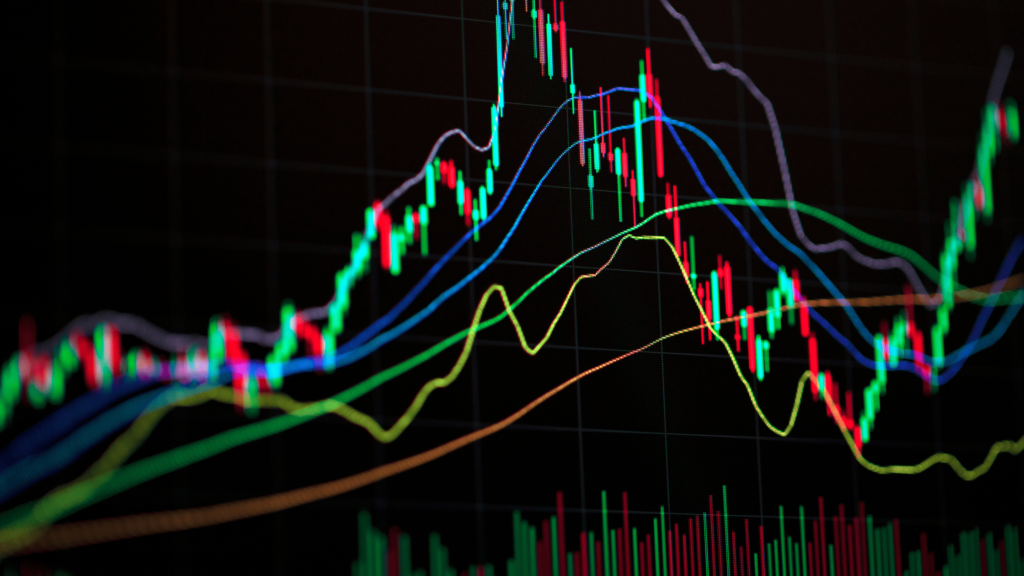
Technical analysis (TA) is the backbone of trading strategies in both forex and crypto markets. Whether you’re a seasoned trader or a beginner, understanding how TA differs between these two volatile markets can help you refine your trading approach and maximize profits.
In this article, we’ll dive into the core aspects of technical analysis for forex vs. crypto, explore Technical Analysis: Forex vs. Crypto Trading in 2025 and their unique characteristics, key indicators, and best practices.
1. Understanding the Nature of Forex and Crypto Markets
Forex Market:
The foreign exchange (forex) market is the world’s largest and most liquid financial market, trading over $7.5 trillion daily. It operates 24/5 and primarily involves major fiat currency pairs like EUR/USD, GBP/USD, and USD/JPY. Forex is heavily influenced by macroeconomic factors such as interest rates, economic data, and geopolitical events.
Crypto Market:
Unlike forex, the cryptocurrency market operates 24/7 and is driven by blockchain technology, investor sentiment, and market speculation. Crypto assets like Bitcoin (BTC), Ethereum (ETH), and altcoins experience extreme volatility, sometimes seeing 20-30% price swings in a day. Additionally, cryptocurrency markets are more decentralized, with trading occurring across multiple exchanges rather than a central authority, unlike forex. Technical Analysis: Forex vs. Crypto Trading in 2025
Check our other blog regarding TA in crypto: Does Technical Analysis Work on Crypto?
2. Key Differences in Technical Analysis: Forex vs. Crypto

a) Liquidity & Volatility
- Forex: Highly liquid with lower volatility, making technical patterns more reliable.
- Crypto: Lower liquidity and higher volatility, leading to frequent market manipulation (e.g., whale moves, pump-and-dump schemes).
b) Market Participants & Trading Hours
- Forex: Dominated by institutions, central banks, hedge funds, and retail traders; trades 24/5.
- Crypto: Retail-driven, with whales and institutional investors growing in influence; trades 24/7.
c) Key Technical Indicators Used
While many TA tools work in both markets, their effectiveness differs:
| Indicator | Forex Use Case | Crypto Use Case |
|---|---|---|
| Moving Averages (MA, EMA, SMA) | Trend identification | Works well but can lag due to extreme volatility |
| Relative Strength Index (RSI) | Identifies overbought/oversold levels | Often gives false signals due to sudden price swings |
| MACD (Moving Average Convergence Divergence) | Momentum and trend strength | Useful, but crypto trends can change rapidly |
| Bollinger Bands | Volatility measurement | Extremely useful due to high volatility |
| Fibonacci Retracement | Support & resistance levels | Strong application in both, but crypto reacts more unpredictably |
| Volume Profile | Institutional trading zones | Less effective in crypto due to fragmented liquidity |
3. Best Technical Analysis Strategies for Forex and Crypto
Forex Trading Strategies:
- Trend Trading: Using moving averages to enter trades in the direction of the trend.
- Breakout Trading: Identifying key levels and trading breakouts with volume confirmation.
- Support & Resistance: Classic approach to trading price reaction at key levels.
- Carry Trade Strategy: Taking advantage of interest rate differentials between two currencies.
Crypto Trading Strategies:
- Scalping & Day Trading: Given crypto’s volatility, quick in-and-out trades can be profitable.
- Mean Reversion: Prices tend to revert to the average after extreme swings.
- On-Chain Analysis: Unique to crypto, involves tracking whale wallets, exchange flows, and blockchain metrics.
- Market Sentiment Analysis: Using social media trends, news, and hype cycles to predict market moves.
4. Risk Management in Forex vs. Crypto

Regardless of market type, risk management is non-negotiable:
- Forex: Utilize tight stop-loss orders and risk only 1-2% of your capital per trade.
- Crypto: Due to higher volatility, stop losses should be wider to avoid premature liquidation.
- Leverage Caution: Forex offers high leverage (up to 100:1), while crypto trading platforms allow up to 125x leverage, which can lead to massive gains—or devastating losses.
- Diversification: Forex traders often diversify by trading multiple currency pairs, while crypto traders can diversify into different asset types, including stablecoins.
5. Psychological Aspects of Trading in Forex vs. Crypto
Forex Trading Psychology:
- Requires patience and discipline due to slower market movements.
- Emotional control is crucial, as traders must avoid impulsive decisions during macroeconomic events.
- Backtesting and historical data analysis play a significant role in decision-making.
Crypto Trading Psychology:
- Higher emotional stress due to extreme price swings.
- Fear of missing out (FOMO) and panic selling are common due to social media influence.
- A strong mindset is necessary to handle prolonged bear markets and sudden bull runs.
6. Fundamental Analysis vs. Technical Analysis in Forex and Crypto
While technical analysis is a primary tool for short-term trading, fundamental analysis (FA) is also important.
- Forex FA: Macroeconomic factors, interest rate decisions, GDP growth, employment reports, and central bank policies influence forex markets.
- Crypto FA: Tokenomics, project utility, developer activity, regulatory news, and adoption rates impact cryptocurrency prices.
7. Which Market is Better for Technical Traders?
- If you prefer structured, predictable patterns with lower risk, forex is ideal.
- If you thrive in fast-paced, high-volatility markets with higher reward potential, crypto is better suited.
- Forex is best for traders who want steady profits with institutional-grade tools.
- Crypto attracts risk-tolerant traders looking for rapid gains and market innovation.
Conclusion
Technical analysis remains a powerful tool in both forex and crypto trading, but the strategies must be adapted to each market’s unique characteristics. While forex provides stability and liquidity, crypto offers high-risk, high-reward opportunities. The best approach is to test your strategies, refine your risk management, and stay updated with market trends.
Are you a forex or crypto trader? Drop your favorite TA strategies in the comments!
Technical Analysis: Forex vs. Crypto Trading in 2025
Leave a Reply